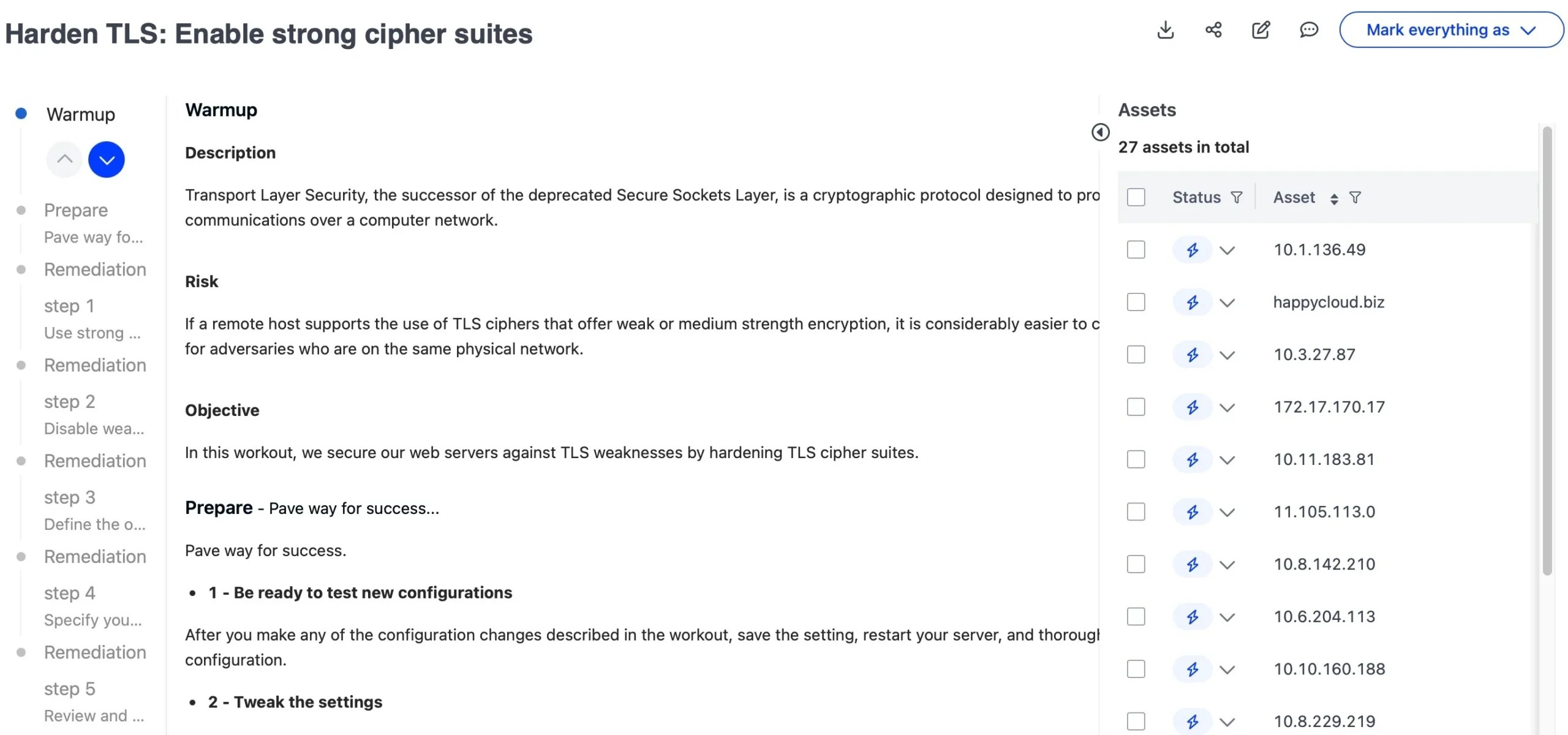Start remediating your issues: a guide for General Users
Choose which Workout to do first, and get on top of the assets and issues you’re responsible for
Autobahn is a powerful platform built to support both experienced security professionals and IT team members without a dedicated security background. It helps organizations identify, understand, and address vulnerabilities across their digital infrastructure.
In this guide, we’ll walk you through how to interpret scan results and take actionable steps to remediate any vulnerabilities that are found – empowering you to contribute to your organization’s security posture with confidence.
This guide is tailored for users with the General User role.
If you don’t see any data in your account, it’s likely because you haven’t been assigned to any assets or issues yet. In that case, please reach out to someone in your organization with an Admin or Owner role and request access to the relevant assets or issues. This will ensure you can view and act on the information that matters to you and automatically give you access to relevant Workouts.
1. Workouts overview
Once you log in, you’ll land on the Cyber Fitness Workouts page.
Workouts are step-by-step remediation guides designed to address the root causes of vulnerabilities – often resolving multiple issues at once.
The workouts displayed are sorted by Hackability Impact, which reflects how much each workout can improve your organization’s overall security posture, as measured by the Hackability Score.
The Workouts list also shows your progress for each workout. As you remediate issues, the numbers get updated: every time you fix an asset, the count in the Affected assets column decreases, while the number of Closed issues increases (the amount depends on how many issues got fixed on a given asset). This improves the closed-to-total issue ratio, bringing it closer to 1 – your ultimate goal, where all issues are resolved.
To maximize impact, we recommend starting from the top of the list.

2. Workout details
Clicking on a workout in the Workouts list opens the detailed view, which includes:
- A table of contents for quick navigation
- Step-by-step remediation instructions to guide you through resolving the issues
- A list of affected assets that need to be fixed
This view helps you understand the scope of the workout and take action efficiently.

Some workouts include links to Related workouts.
These related workouts do not lower your organization’s Hackability Score, but they serve as additional resources that are relevant to the topic of the assigned workout. They can help deepen your understanding or provide further remediation options.
From this view, you can download the Workout as a PDF, along with a spreadsheet listing the affected assets and issues the Workout addresses. This is especially useful if you need to share the information with team members who don’t use Autobahn.
If your organization has integrated a ticketing system, you can also send workouts directly to platforms such as Jira, ServiceNow, or Serviceware, or forward them to an email address as a standard message. Simply use the Send to button located in the top right corner of this view.
We also welcome your feedback. If you have suggestions for improving our workouts, please don’t hesitate to contact us by using the Feedback button – we’d love to hear your ideas.
3. Asset and issues in the Workout context
By expanding the Assets column in the Workout details view, you’ll find filterable details of each asset that requires remediation by a given Workout, such as: tags, maximum issue severity or the date the issue was last detected.

This view uses infinite scrolling, so be sure to scroll down to load and view additional entries.
For a deeper dive, click the number in the Open Issues column.
This will take you to a detailed view listing all issues on that asset that are targeted by the current workout, including port, service information as well as the script output (where available) located in the last column on the right. You can also access the Issue details view by clicking on the issue name.
While these insights are valuable for understanding the context, don’t forget that your primary goal is to follow the workout’s remediation steps and fix the issues on the affected assets to contribute to lowering the Hackability Score of your organization.
4. Remediating affected assets
Once you’ve fixed the issues on an affected assets by following the Workout’s remediation steps, you can mark your progress by:
- Marking the entire asset as Remediated.
This will automatically mark all issues on that asset covered by the workout as Remediated.
This will automatically mark all issues on that asset covered by the workout as Remediated.
If you want to close an entire Workout along with all associated issues, use the Mark everything as… button located in the top-right corner of the Workout details view. This action applies the selected status to all issues within the Workout, so please use it carefully. - Providing a re-scan or a data fetch for integrated sources.
If the asset and relevant ports are still reachable and the issues are no longer detected, Autobahn will automatically mark them as Remediated.
This approach is recommended when working with a group of assets, as it aligns with how scans are typically configured in Autobahn.
It’s also technically possible to manually close issues one by one on the Issues page. However, this approach is more time-consuming and requires extensive filtering. We recommend using the workout view, where all relevant issues are already pre-filtered for you.
If an issue is a false positive or if your organization has decided to accept the risk, you can update the status accordingly.
If your organization has the Issue Review feature enabled, you’ll be prompted to select a reviewer to approve the status change (read more about this feature here).
All closed issues – whether marked as Remediated, False Positive, or Risk Accepted – contribute to lowering your organization’s Hackability Score.